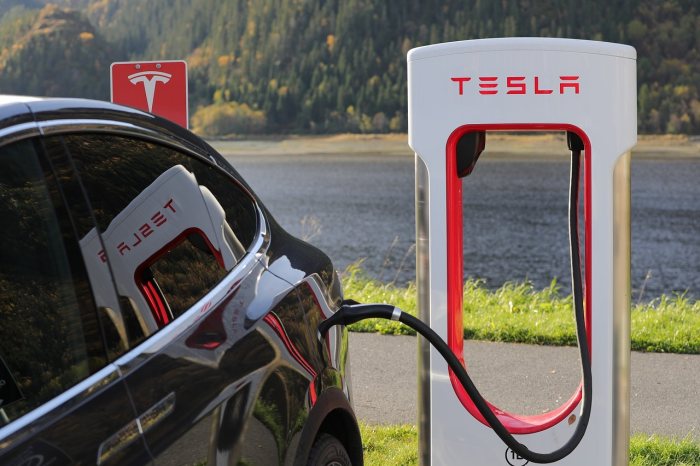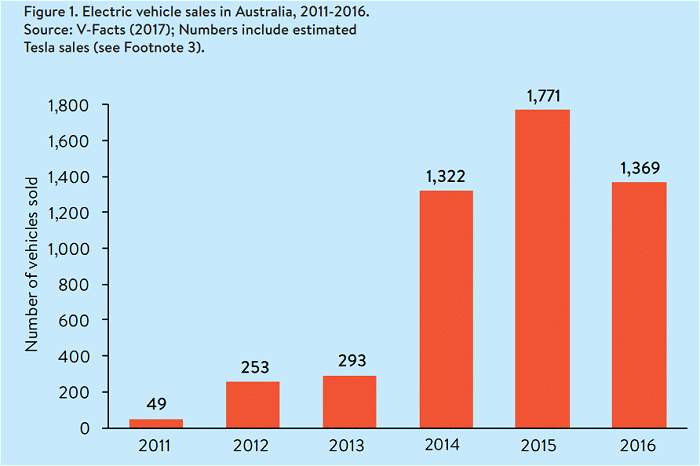
Image: Blomst
A meeting in Adelaide on Friday saw the signing of a Memorandum of Understanding (MoU) by seven Australian states, territories and cities with a goal of accelerating the nation’s transition to electric vehicles.
The electric vehicle revolution may be unstoppable, but when it will actually arrive in Australia in earnest is another matter. There’s certainly a great deal of interest in Australia in EV’s, but the lack of affordable models and subsidies along with perceived range issues are proving to be major barriers to uptake.
Unlike the uptake of another emissions-slasher, solar power systems, Australia’s track record on electric vehicle adoption is less than stellar. In June, Australia’s Electric Vehicle Council reported there were approximately 1700 EV sales in Australia in 2015, and last year that figure dropped to around 1,300.

Just 2% of Australian EV sales were to government buyers in 2016.
The MoU will see the development of a plan to increase the share of electric vehicles in the fleets of the document’s signatories, which are:
- South Australia
- Victoria
- Western Australia
- Australian Capital Territory
- City of Adelaide
- City of Hobart
- City of Darwin
“It’s important that we are at the forefront of a transition to lower-emission vehicles in Australia – both to reduce greenhouse gases and other emissions, and to keep pace with global competitors,” said South Australia’s Climate Change Minister, Ian Hunter.
Adelaide has already started attracting attention in the EV sector. In September we reported France’s Navya, which produces autonomous electric vehicles, will be establishing its Asia-Pacific manufacturing facility in Adelaide. One of the things that attracted Navya to South Australia was the state’s renewable energy street- cred.
In October, eight EV charging stations were opened in Adelaide’s CBD, including four Tesla superchargers.
ACT Climate Change and Sustainability Minister Shane Rattenbury said the MOU seeks to change Australia’s tardy EV uptake through cooperative efforts such as implementing more charging stations across participating jurisdictions – and he sees a special role for the ACT.
“Canberra is fast becoming a hub for renewable energy and clean technologies, and is the ideal place for electric vehicle initiatives,” said Minister Rattenbury. “Our transition to 100% renewable energy means EVs can be recharged here without creating greenhouse gas emissions.”
Mr. Rattenbury also stated the ACT is the only jurisdiction in Australia to have a Green Vehicles Stamp Duty Scheme to encourage the purchase of low- emission vehicles. Under the scheme, vehicles with an “A” rating (Up to 130g of carbon dioxide emissions per kilometre) attract $0 in duty. At the other end of the scale is the “D” class, (221g or more per kilometre), which attracts a duty of $4 per $100 or part thereof for vehicles valued at under $45,000 and $1,800 plus $6 per $100 or part thereof for vehicles valued over $45,000.
Under the MoU, the signatories will also seek to align standards and incentives.
On a related note, if you’ve ever wondered how many solar panels you’d need for charging an electric car, SQ’s Ronald has the answer.

 RSS - Posts
RSS - Posts



Speak Your Mind